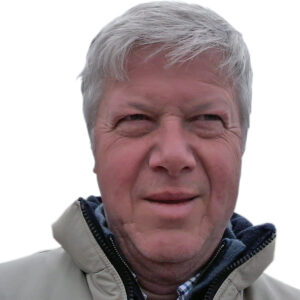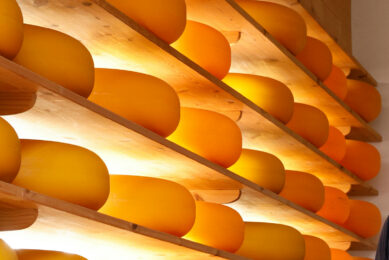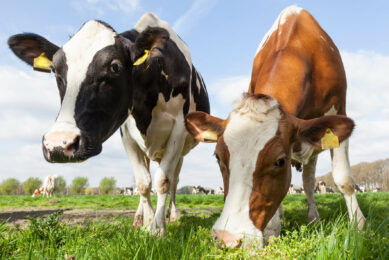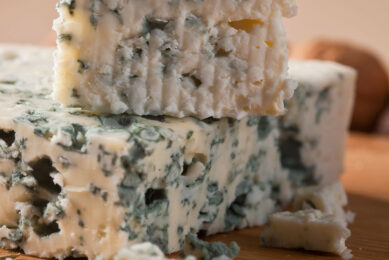Farm report, France: 50 years of organic milk production
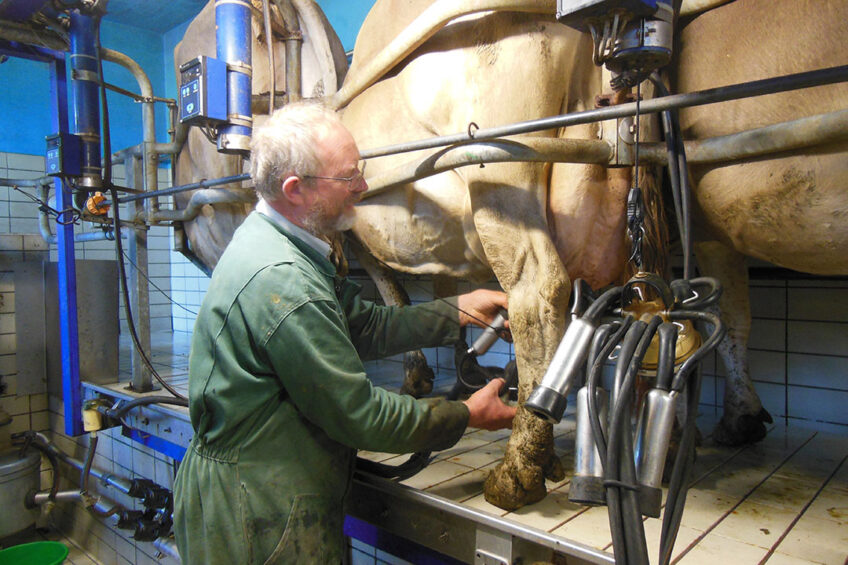
There are 2 very important dates in history for this farm: its purchase by the monks of a French abbey in 1938, and the beginning of organic production in 1969, which made the farm of la Pierre-qui-Vire one of the first French farm to start organic farming.
Another important year for the farm was 1994. This is the year the monks stopped management of the farm. It is also the year Philippe Abrahamse started as the new farm manager.

“There were 3 scenarios seen for the future of the farm, at that time,” says Philippe Abrahamse.
3 future scenarios considered for the farm:
- to grow pine trees,
- to sell the farm or
- to find solutions to develop it.
One of the decisions was to start a herd of 80 goats to boost milk production to be processed on the farm. Today the farm is managed by an original civil farming society called SCEA la Pierre-qui-Vire, with 3 co-managers: Philippe Abrahamse and his wife Véronique, and a managing monk from the abbey.
“We are in the Morvan Nature Park, a region with poor land dedicated to forage production,” says Philippe. Today the farm has a dairy herd of 80 Brown Swiss cows plus a herd of 80 brown goats.
Farm profileName: The Pierre qui Vire farm Location: The farm is situated near the village of Saint-Agnan at 800m from the abbey, north of Burgundy. The farm is 170 ha, of which 150 ha meadows, the rest being crops (triticale + pea) Management: 3 co-managers – Philippe Abrahamse and his wife Véronique, and a managing monk from the abbey Livestock: 80 Brown Swiss dairy cows producing 450,000 litres/y (of which 300,000 litres processed on farm and around 160,000 litres sold to Biolait. 235 million litres collected from 1,300 member farms in 2018, price paid in 2018: 480 €/t ). 80 Brown (Alpine breed) goats producing 35,000 to 40,000 litres milk/y Organic: Main organic dairy products sold: Cow and goat cheeses, white cheeses, plain and flavoured yogurt from cows |
Swiss grass mixture
The dairy herd produces around 450,000 litres milk/year, of which 300,000 litres are processed on the farm and around 160,000 litres sold to Biolait, the first collector of organic milk in France. The goat herd produces 35,000 to 40,000 litres milk/year, with the target of 50,000 litres in the future.

One of the farm’s key drivers is grass management. Swiss mixtures of grasses and legumes (early and late English perennial ray-grass, hybrid Ray-grass, meadow fescue, timothy, white clover, red clover, hybrid clover, trefoil.) was introduced by the monks. Philippe adds that this Swiss mixture is adapted to the meadows of the farm. The French INRA (National Farming Research Institute) of Toulouse worked on meadows having various flora but in reality little knowledge exists about these types of meadows.
Our philosophy is to produce milk at low costs and to keep our cows as long as possible,” – Philippe Abrahamse.
Mineral supplementation
Cows graze from April to mid-October and the management of the animals is based on good practices and well-being. “Our philosophy is to produce milk at low costs and to keep our cows as long as possible,” Philippe explains. On average, cows make 5 lactations and the oldest cow on the farm is 12 years old and one of the best ones in the herd! Calving are programmed for when the farm needs milk to make cheese, mainly from Easter to November, and the goal is to have 1 calf/cow/year. If they don’t graze, cows receive a ration of dried hay of very high quality. In 2016, the farm having invested in a drying facility.

“Cow complementation is also very important,” adds the farm manager. As granitic soils lack calcium, cow mineral supplementation is enriched in calcium. Cows receive 25-50 g/day of a specific mineral feed produced by Symbiopole, a local feed company producing tailored feed and mineral supplements for farmers, based on a complex of plants, such as nettle, horsetail (one of the richest silicon plants that allows the fixation of calcium), the thistle, the dandelion, the artichoke – without forgetting that chestnut bring tannins and have an effect on digestive parasitism.
“If cows are correctly fed, they will have fewer health issues,” adds Philippe. Mineral supplementation is added to the concentrate made on farm (based on peas, dehydrated alfalfa, barley) and distributed to the cows with automatic feeders. With this feed management, cows produce from 5 to 6,000 litres milk/year at 46-47% of fat and 35-36% protein.
“3 people work on cheese making and we process 500 to 600 cheeses/day,” explains Philippe who emphasises the cheese making stages. “We supply around 50 customers every week, with different profile (stores, restaurants, wholesalers mostly regional but also all over France) adds Ludivine, who is in charge of the cheese processing.
Towards autonomy
2 important investments have been made on the farm during the last decade: a biogas production facility in 2012 and a grass drying barn in 2016.
“Autonomy thanks to local renewable resources has been a philosophy of the abbey for many years,” says Philippe. Thus, a hydraulic power plant of 450 kW electric was started in 1968 and, since 2005, the abbey is heated by a wood chip boiler of 1 200 kW electric.
The modification of a part of the cow barn with a passage in cubicles for the cows has generated the production of slurry and was a trigger for the methanisation plant that allows storage of this slurry and to produce energy for the cheese factory.
The investment made in 2012 allows the production of 140,000 m3 of biogas per year (52% methane). Philippe adds that the substrates entering the plant are 2,000 tonnes of cattle manure and 200 tonnes of vegetable.
In 2016, the grass drying facility was also a key investment of the farm. “The quality of the harvested hay depends on a lot of factors, he says, the main factors being the weather. The goal of the grass drying facility was to optimise the quality of the harvested hay to produce super organic milk and cheeses. The facility, working one month/y during the grass harvesting period, consists in 4 cells where grass is stored between 2 and 3 m height. Before being stored in the drying facility, the grass lays 2 days in the field and it can be harvested once the dry matter content is 70%. The operating mode of the drying unit is simple and automatically controlled: the air arriving under the roof is heated by the sun and at the same time warm air comes from below thanks to a boiler and a dehumidifier. It takes in average two days to dry grass and to produce a hay of very high quality. “The quality of the forage harvested varies and the concentrate supplements the ration of the most productive cows,”
“We can still improve grass management in sowing late varieties on later plots for instance,” explains Philippe whose working philosophy is: long term management of the land, to trust nature, to observe cows and to feed them well (a well-fed cow is able to defend herself).

A target of 600 litres/goat
The goat management is similar to cows. After milking, goats are fed with alfalfa hay plus a concentrate distributed at the trough (800 g/day). This concentrate consists in a mixture of crushed cereals plus maize, barley, oat and peas.
Goats are milked twice a day with an average of 400 litres lactation. “Our target would be to reach 500 to 600 litres/lactation,” states Philippe.
For the past 2 years, the goat herd has been experiencing recurrent parasitism (strongyls) problems, and trials have been conducted with company Symbiopole, to address the problem with herbal supplements.
In 2019, the farm marked 50 years of successful organic farming.
Join 13,000+ subscribers
Subscribe to our newsletter to stay updated about all the need-to-know content in the dairy sector, two times a week.


